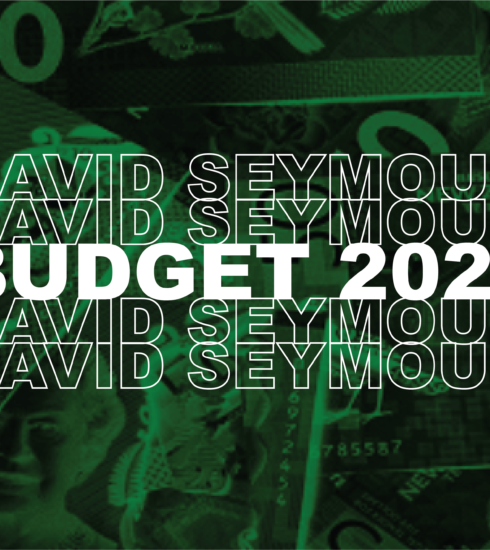Gender + Pay Equity – Issue 21
I began writing this piece before hearing Sunday’s news that Justice Ruth Bader Ginsburg had passed away, after a battle with pancreatic cancer. Justice Ginsburg was revered not only for the time she served on the United States Supreme Court, but also for her work as a lawyer and a Federal Court Judge. Across her career, Justice Ginsburg fought against discrimination and advocated for equal rights, including fair and equal pay. While this article isn’t about Justice Ginsburg, it’s fitting to remember her work, as we dive into the Gender Pay Gap, a continuing sign of inequity in New Zealand and across the world.
Not too long ago in New Zealand, it was legal for employers to pay men and women differently, for doing the same job. That’s a depressing thought right? No matter how hard you worked, your salary could be determined by your genitals – having a penis literally “paid off”.
Before 1960, employers could pay men and women differently to do the same job, and so they did. Why? Because men decided who got paid what, and there appeared to be an overriding assumption that men are smarter, men work harder, and men deserve money. The difference in pay scale wasn’t based on facts or evidence of work ability, it just was.
67 years after women were given the right to vote, the New Zealand Government decided that hey, maybe women in employment also deserved to be paid the same as their male counterparts. The Government Service Equal Pay Act 1960 (“GSEPA”) was introduced,requiring Government Organisations pay Government employees the same, regardless of their sex.
The GSEPA was a step in the right direction, although it only applied to people working under the Government (including organisations such as the IRD and the NZ Police). Employees in the Public Sector had to wait another 12 years for the Equal Pay Act 1972 (“EPA”) to be enacted – by now some of your parents would have been in the workforce!
In 1978, New Zealand signed the United Nations Covenant on Economic, Social and Cultural Rights (if you’re a first year law student, you’ll know all about this one). On signing this agreement, New Zealand agreed to uphold the international principle that regardless of sex or gender, workers should be paid “equal remuneration for work of equal value without distinction of any kind”.
We also signed up to the United Nations Convention on the Elimination of Discrimination against Women in 1985, confirming that the Government would ensure equal opportunities for women, including in the workplace.
Unfortunately, over 40 years since the EPA was signed, gender inequality and inequitable pay are still problems in New Zealand. In order to help combat pay inequity the Equal Pay Amendment Act 2020 was passed this year. This Act has will come into force on 6 November 2020, and works to “eliminate and prevent discrimination on the basis of sex in the remuneration and employment terms and conditions for work done within female-dominated jobs”.
On the face of it, it looks like we’ve done all we need to to stop sex-based pay discrimination. It’s not legal to discriminate on the basis of sex or gender anymore, and both in New Zealand and internationally laws have been put in place to stop that from happening. I’m sure that if you ask any employer whether they pay men and women the same, of course they’ll nod vigorously. And it’s true, that you’d be hard-pressed to find a company who pays men and women differently for doing the exact same job. So do we really need continued work towards equal pay? In short, yes.
In long, also yes. The Gender Pay Gap is the fact that on average men get paid more than women, pretty much any way you look at it. It’s a fact that across New Zealand, men make more money than women. Regardless of location, occupation, job title, age, and qualification, men are coming out on top.
In the Waikato, we have a Gender Pay Gap of 9%. This is calculated by working out the difference in average wage paid to both men and women. On average, women in our region are paid $24 per hour and men are paid $26.60. In 2019, the New Zealand wide Gender Pay Gap was 9.3% – women across New Zealand earnt 9.3% less than men.
This doesn’t mean that men are being paid more than women for doing the exact same work, but it means that men are being valued and rewarded far more than women in the workforce, across a number of measures. While on a base level we’ve achieved equal pay, we don’t have pay equity. Equity and equality work towards fairness. While equality achieves this through treating everyone the same regardless of circumstances, equity achieves this through treating people dependent on circumstances.
When considering the Gender Pay Gap, there are two factors that are particularly important, and help in part to explain where the disparity comes from: occupational segregation, and vertical segregation.
The first factor contributing to the Gender Pay Gap is occupational segregation. This is the reality that some fields are more by one gender. Not all industries, but take construction and health care as two examples of careers with a high degree of occupational segregation. It’s factually true that, more nurses are women, and more builders are men.
The reasons for this segregation vary, and it’s not all down to outright sexism. Putting aside the reasons, however, the reality, is that in these fields, the occupations mainly held by women are paid less than the occupations held by men. The jobs that were traditionally seen as “women’s work”, come with a lower salary or wage attached to them.
Vertical Segregation
Vertical segregation is the other factor clearly highlighted when examining the Gender Pay Gap. The age old stereotype that men are the CEOs while women are the secretaries, is unfortunately still seen today. Men hold more senior positions in the New Zealand workforce than women do. You don’t have to look too hard to find the stats supporting this, either. Of New Zealand’s 8 Universities, there is only one female Chancellor. There are 3 female Vice-Chancellors, which of the 16 positions, sees women occupying one-quarter.
The lists of top CEOs in New Zealand looks much the same – in 2017 the NZ Herald published a list of the 20 top earning Executives, with one lonely woman named in the entire list. And, in 2018, there were 15 people earning over $2,000,000 per year, and only 4 of those were women.
The movement towards pay equity doesn’t suggest that men don’t deserve to be paid well, but works towards ensuring that women get paid just as well. We haven’t reached a state of pay equity yet, and this is largely down to the segregation discussed above. Occupational segregation means that the jobs that women are more likely to hold earn less money. Vertical segregation means that even when women are in the same career path as men, the men are likely to earn more money.
Where to From Here?
Positively, the New Zealand Government, and many New Zealanders are working towards gender and sex equality The new 2020 Pay legislation will help with occupational segregation. Many government departments have published their action plans with respect to pay equity – check out the Ministry for the Environment for a great example. The New Zealand Human Rights Commission is helping businesses self-assess their “gender equality health”. Westpac Bank has publicly announced their commitment to eminitating their whopping 30% pay gap. The YWCA have introduced a “Gender Equality Tick” system, recognising compliant businesses.
Now comes the big question, and unfortunately one that I don’t have the answer to. How do we really solve the Gender Pay Gap? Pay equity remains an issue across New Zealand, and it’s one we all have to keep working on. Keep learning, keep talking, and don’t settle for the status quo, “just because that’s how it is”. Which is a thought that leads nicely into a quote from Justice Ginsburg: “Real change, enduring change, happens one step at a time.”





